Choosing the Right Enclosure for Your Electronics Project
2022-01-26 | By Maker.io Staff
Moving from a prototype to a final version of a project requires several key decisions, including choosing an enclosure that meets the project’s requirements. Often, the case is an afterthought, which can negatively impact the design and functionality of a DIY project you worked on for many hours. Therefore, this article summarizes a few enclosure options and gives you a few tips and tricks on when to use which type of case in your project.
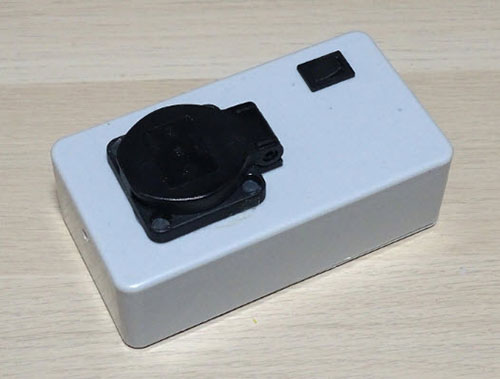 This image shows an assembled project that uses an off-the-shelf enclosure.
This image shows an assembled project that uses an off-the-shelf enclosure.
Using a Pre-Made Case
Using an off-the-shelf electronics enclosure, sometimes referred to as a project box, is the most straightforward option for many makers and projects. Pre-made cases come in all shapes and colors, and you can often also choose materials specifically tailored to different project environments.
ABS enclosures are the most common type. This flexible and durable plastic offers a fantastic mix of properties that work fine in most DIY projects. However, ABS alone is not UV-resistant. If you intend to use your finished project outdoors or near UV lamps, for example, look for alternative materials or UV resistant ABS enclosures. The latter type uses a special ABS plastic treated with a UV-resistant coating. Either way, regular ABS cases are typically low-cost and non-conductive, and you can get them in various sizes and colors.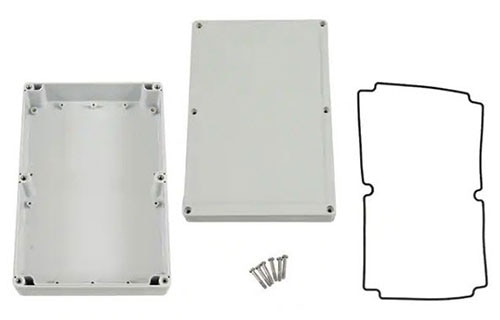 A typical gray ABS project box that includes case screws and a seal that protects the interior from dust and water. Image source: https://www.digikey.com/en/products/detail/hammond-manufacturing/1555VALGY/13165462
A typical gray ABS project box that includes case screws and a seal that protects the interior from dust and water. Image source: https://www.digikey.com/en/products/detail/hammond-manufacturing/1555VALGY/13165462
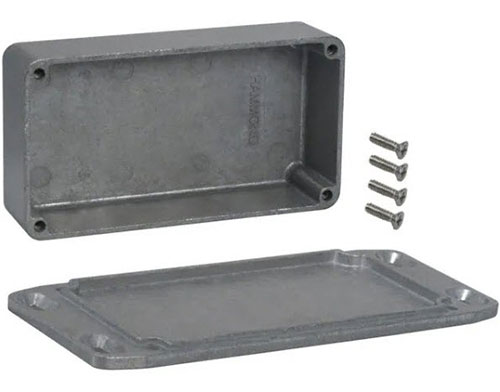 This image shows a small project box made from aluminum. Image source: https://www.digikey.com/en/products/detail/hammond-manufacturing/1590BFL/284769
This image shows a small project box made from aluminum. Image source: https://www.digikey.com/en/products/detail/hammond-manufacturing/1590BFL/284769
Lastly, it’s simple to modify plastic cases. You can effortlessly make cutouts for switches, LEDs, and displays, for example, using easily accessible tools such as a sharp knife. Metal enclosures often require using more professional tools to modify the case.
Using a Modular Approach
The previously discussed option assumed that you wanted to place all the components inside an enclosed case. Alternatively, you can also choose a more modular approach. You can buy pre-made cases for popular development boards, such as the Arduino UNO and the Raspberry Pi. Manufacturers designed these specialty enclosures to fit and protect a specific device, and they often also include cooling solutions where needed. The development board then sits within the case, and you can then attach modules like a touchscreen directly to the development board.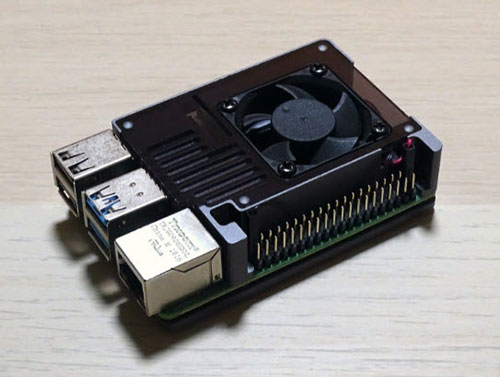 This readily-available Raspberry-Pi enclosure cools down the main CPU and also allows its users to easily access all I/O interfaces of the single-board computer.
This readily-available Raspberry-Pi enclosure cools down the main CPU and also allows its users to easily access all I/O interfaces of the single-board computer.
The modular approach is perfect for beginners and projects that you won’t take outdoors. Adding such a case is a quick process, as you don’t need to make any modifications. As a downside, these enclosures often only fit a single development board, and they may cost more than general project boxes.
Fully Customizable and Professional Cases
If you want to make your finished device shine, there’s no way around designing a custom enclosure specifically for your project. While it’s possible to make an off-the-shelf project box look good, I think nothing beats a custom-made case.
Unfortunately, this approach requires you to invest a significant amount of time creating a custom design. You should even account for a trial-and-error period if you’ve never designed a custom case before. Additionally, you may need more professional tools and machines, such as a 3D printer, to create custom project enclosures.
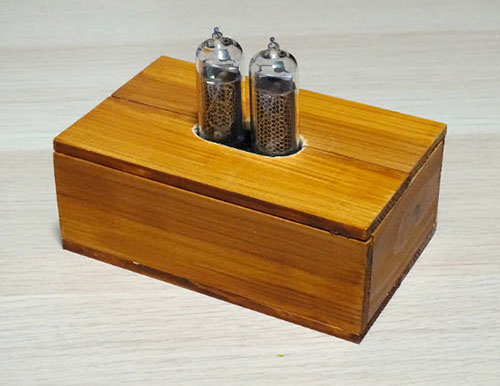 This custom-made wooden enclosure houses a simple nixie-tube thermometer project.
This custom-made wooden enclosure houses a simple nixie-tube thermometer project.
However, in my experience, the result speaks for itself, as homemade project enclosures give every DIY project that special touch that makes it stand out from the crowd. In addition, you can design the case just like you want, and it will always perfectly fit and protect the components on the inside. With pre-made project boxes, you most likely always have to make compromises on the size, appearance, or material of the box. On the other hand, DIY enclosures allow you to pick the design, color, and material you want.
Tips and Tricks for Choosing the Right Enclosure for Your Project
Lastly, I wanted to share some tips you should remember when choosing a project box. First, make sure that all components fit inside the enclosure. However, don’t forget to account for wires that connect the electronic parts, as the cables might take up a significant amount of space inside the case. Also, think about how you can mount the components within the case.
Next, think about the I/O options for your project. Account for switches, buttons, LEDs, and displays, and lay them out before you make any modifications to the enclosure.
If you require a watertight enclosure, make sure that the one you choose comes with a rubber seal that protects the inside from dust and water. However, don't forget about the thermal design, as some electronic components might get warm during operation. A watertight case could lead to components overheating and getting damaged. Therefore, consider using the case as a heatsink to dissipate the heat.
Summary
Project enclosures come in all shapes and colors. Using an off-the-shelf project box is a reasonable option for most projects. Here, you can choose from various materials, where each one has its pros and cons. Plastic cases are easy to modify, low-cost, and light. Metal enclosures are incredibly sturdy and can act as a heatsink. Custom-made cases are a beautiful addition to any DIY project, and they make every homemade device look special. These enclosures, however, often take longer to design and produce, and you might need special tools to create them.






